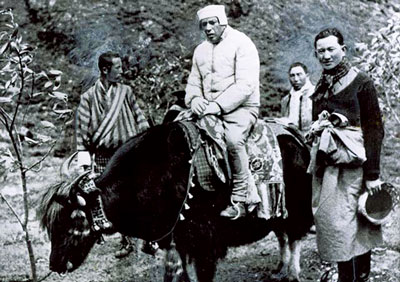Bhutan Hydel Project & Assam’s Protest
Dwaipayan
Continuing with a good rapport with its next door neighbour generally is an important component of any country’s foreign policy, be the former a geographically ting state or its stature small on the international platform. This is a sino quo non for a country like India given the fact that its relationships with its neighbours like Pakistan, Nepal, China and SriLanka are one of despair, maybe India’s foreign policy basically based on Nehru’s Panchasheel does not suit their interests. India’s relation with Bangladesh was good. But it is now looking at the Modi-led NDA government with suspicious eyes for reasons known to people, especially those who are from the Northeast India. So currently Bhutan is the lone country with whom it enjoys good relations. It is against this backdrop that Modi has quite sensibly made the Himalayan kingdom part of his first foreign visit on his journey. No wonder, it is not Bhutan’s minuscule size but it’s very strategically-sensitive location having common borders with China, Tibet, Sikkim and the North-East of great importance to China, and the two neighbours’ mutual benefits in a few key areas that must have prompted the Prime Minister Narendra Modi to visit the Kingdom.
It is against this backdrop that Modi has quite sensibly made the Himalayan kingdom part of his first foreign visit on his journey. No wonder, it is not Bhutan’s minuscule size but it’s very strategically-sensitive location having common borders with China, Tibet, Sikkim and the North-East of great importance to China, and the two neighbours’ mutual benefits in a few key areas that must have prompted the Prime Minister Narendra Modi to visit the Kingdom.
Bhutan incidentally was and has been the priority area of India’s defence strategy, especially after the annexation of Tibet by China and the growing influence of Maoist elements in Nepal, a development that has also had its echo in its society. The Prime Minister Modi’s choosing the kingdom as his first foreign destination against this backdrop has been a well-considered decision more so, since China has of late stepped up efforts to woo it and establish full-fledged diplomatic ties with Thimpu. However, what, has been cause for concern to the people in the Northeast, particularly those in Assam, is the series of reports of renewed insurgent activity largely due to the Songbijit faction of the National Democratic Front of Bodoland trying to establish links with a Bhutan-based Maoist militant outfit. If the former somehow manages to establish links with the latter, then what will be its implications in the insurgency-hit Assam is anybody’s guess.
1958 Nehru In Bhutan
After India’s Independence, India’s first Prime Minister, Pandit Jawaharlal Nehru and King Jigme Wangchuck, the Second King of Bhutan signed the Treaty of Friendship and Cooperation in 1949. The treaty was inked by Gyongzim Sonam Tobgye Dorji on behalf of the Bhutanese and by Mr. Rajeshwar Dayal for India. The visit to India in 1954 by the Third King of Bhutan, His Majesty Jigme Dorji Wangchuck was to herald a new beginning in Indo- Bhutanese relations.
Four years later in 1958 Pandit Nehru and his daughter Indira Gandhi visited Bhutan, the first ever visit to Bhutan by an Indian Prime Minister. The strenuous week long journey over horse back and foot did not seem to deter the 69 year old Prime Minister. His meeting with His Majesty Jigme Dorji Wangchuck in Paro is an iconic moment frozen for posterity by the lens of the camera.
The charisma of His Majesty Jigme Dorji Wangchuck and Pandit Nehru and the warmth with which the visiting Indians were received was forever cemented by Pandit Nehru’s historic address to the people of Bhutan at Paro. Nehru’s comment that India and Bhutan were members “of the same Himalayan family and should live as friendly neighbours helping each other” was to go down in history as the defining spirit behind Indo Bhutanese friendship. This was a moment in history.
To read the full text online subscribe to the magazine
OR
Get the copy of the magazine for details contact at email:This email address is being protected from spambots. You need JavaScript enabled to view it.


